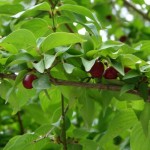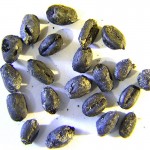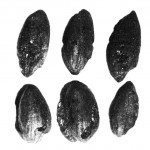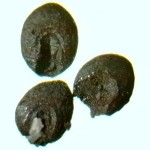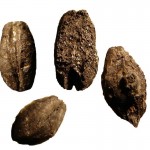Traditional grain Farming
Information about plants that were grown or used as food by the locals, can be obtained by studying the finds of charred grains and seeds in archaeological sites. These tiny archaeobotanical objects are not always possible to observe with a naked eye, so to get them, archaeologists use the method of flushing of the cultural layer of the settlement.
The main cultivated plants, used by the inhabitants of the Peninsula and nearby regions, were filmy wheat, hulled multi-row barley and millet, a lesser role played hulless wheat and legumes. The prevalence of membranous wheats — abuser name — on bare-grained bread wheat is a specific feature of this very part of the Bosporian power.
These both species are the most ancient cultural wheats since the beginning of their domestication in the Middle East they are linked with the appearance of agriculture. In the early iron age, and especially in the Middle Ages, abuser name and especially another kind were cultivated in the Old World in more restricted volumes. Hulless wheat gradually replaced them from harvest due to easier processing (bypassing complex operation for the separation of the wheat from the dense scales in which they are enclosed), as well as the improvement of the tillage tools (soft wheat requires deeper plowing). However, where soil or climatic conditions were unsuitable for cultivation, the farmers continued to prefer filmy types as less whimsical and more reliable to obtain a guaranteed harvest. Moreover, in the Abrau Peninsula in Middle Ages (12-13 centuries), the role of these wheats even increased as compared to the antique period. Ecologically suited to the conditions of the region the filmy multi-row barley. This form of the barley is characterized by early maturity and drought resistance, and Nikolay Vavilov said that «in the steppe foothills of the Caucasus are concentrated most winter-hardy forms of the barley». Along with ecological preferences of certain plants an important role in agricultural practice, play the traditions. To traditional cultures can be attributed millet. It is difficult to overestimate its importance in the agriculture of most archaeological cultures of the early iron age both in the forest and steppe zones, and, according to our materials, even in the foothills areas.
As to legumes the locals grew lentils, rank and Vicia ervilia.
Pretty rare finds of the grape seeds in the vast majority of archaeological sites do not allow to speak about viticulture as a significant sector of agriculture in antic times. In Middle Ages its antique scales noticeably increase. As the archaeobotanical research shows the local population widely used as food and medical purposes the natural plant resources of the region. The most popular in all the times were the dogwood and blackthorn, elderberry, cherry, blackberry, wild rose and even strawberries.
(Elena Yu. Lebedeva)


